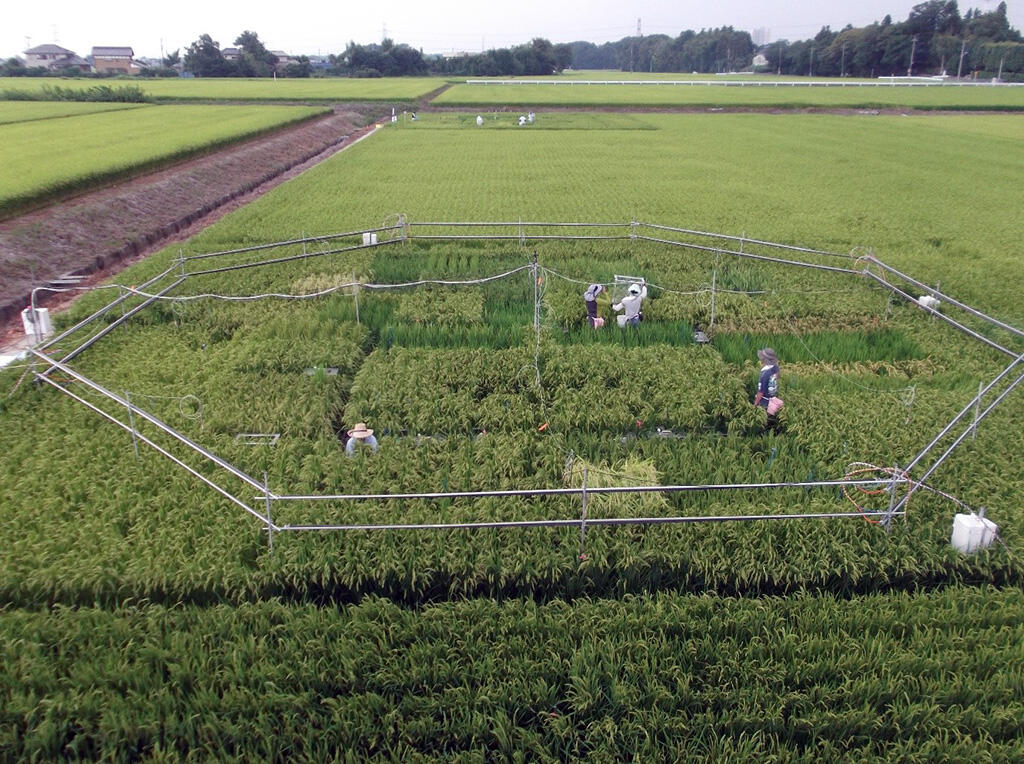On July 19, 2021, two researchers announced that the combined effects of high temperatures and high CO2 due to climate change may be reducing rice yield and accelerating the deterioration of the outward appearance of the crop. These researchers were Motoki Nishimori, Senior Researcher with the Division of Climate Change, Institute for Agro-Environmental Sciences, National Agriculture and Food Research Organization (NARO), and Yasushi Ishigooka, Senior Researcher with the Division of Large-Scale Upland Farming Research, Hokkaido Agricultural research Center, NARO. The researchers reached their conclusions by constructing a growth yield forecasting model of rice considering the combined effect of high temperature and high CO2, reflecting the data of open-field experiments in which CO2 concentration was controlled at an artificially high level. Since the introduction of adaptive measures can be expected to reduce the impact of these environmental factors, it is hoped that these findings will be used to develop interventions.
NARO has prioritized rice as a key crop in Japan. Evaluating the impact of climate change on this crop is a key research area for the country. Previous research predicted the effects of high temperature and high CO2 using a conventional model that treats the two factors separately. It was reported that the adverse effect on the yield was limited to some parts of the country, such as West Japan, due to the effect of increased yield, in which rising CO2 levels promote photosynthesis. Among these experiments, in addition to modeling, demonstration testing has been performed. A free air CO2 enrichment (FACE) experiment performed from 1998 to 2016 imposed high levels of CO2 in an actual rice field in Shizukuishi Town, Iwate Prefecture and Tsukuba Mirai City, Ibaraki Prefecture. The results of this experiment were recently analyzed.
At high CO2 concentrations of approximately 580 ppm, which is 200 ppm higher than present levels, the effect of increased yield as a result of increasing CO2 became smaller as the temperature increased during the ripening season. A new finding was obtained. If the average temperature for 30 days after heading was 20°C, yields increased by approximately 20%. However, as the temperature increased, this increase in yield decreased and became nearly 0% at 30°C. Furthermore, the incidence of white chalky grains increased by 1.5 times owing to the high CO2 concentration, indicating that previous prediction models may be optimistic regarding the impacts of climate change. The increase in white chalky grains is used as an indicator of rice quality (grade). This increase leads to a decrease in farmers' incomes. By refining the method for estimating yield, a modern model was constructed considering the interaction between high temperature and high CO2.
Estimates of paddy rice yield and white chalky grain rates for 120 years from 1981 to 2100 were made with the latest model and the conventional model. The climate projection scenarios involved five climate models based on two types of greenhouse gas emission scenarios (RCP (Representative Concentration Pathways) 2.6, 8.5). Popular cultivars of rice (which are not very resistant to high temperatures) were used and adaptation measures, such as the use of currently existing adaptive varieties, were not taken in the models.
Consequently, for climate projection scenarios based on increasing CO2 scenarios (RCP 8.5), compared to predictions made by previous models, modern projection models estimate national average yields will be approximately 15% less on average around the middle of this century (2031-2050) and approximately 20% less on average at the end of this century. The difference between the two prediction models increased as the period progressed, indicating that the decreasing yield of paddy rice became more serious earlier.
In addition, the national white chalky grain ratio was calculated to be approximately 5% higher on average in the middle of this century and approximately 10% higher on average at the end of this century in the latest model compared to the conventional estimation model. Here, too, the difference between models increases over time. This suggests that deteriorating visual quality may become serious sooner than previously predicted.
Mapping these results on a time basis, projections with moderate warming, RCP 8.5, show that average yields will increase, except in limited regions, based on conventional projection models. In contrast, modern projection models show a broad range of regions with reduced yields. Similarly, the white chalky grain ratio was predicted to increase, especially in Kyushu and the western regions including Kanto, where the air temperature was high. In contrast, it was predicted that yield and quality will be maintained in the lower temperature environment of Tohoku.

This article has been translated by JST with permission from The Science News Ltd.(https://sci-news.co.jp/). Unauthorized reproduction of the article and photographs is prohibited.




